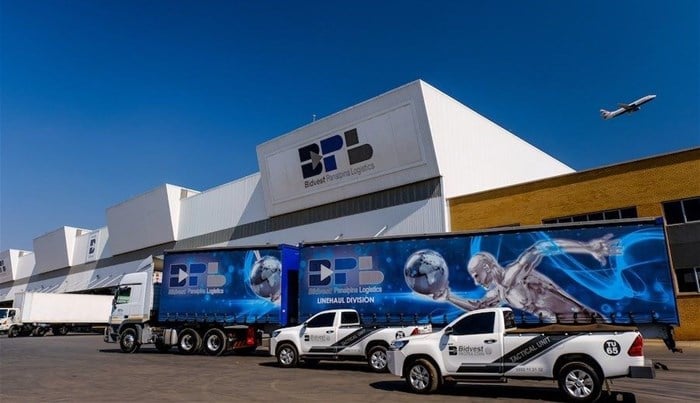
Top stories






More news











“Volume fluctuation coupled with distance and hours worked are some of the key components that we measure to ensure we’re able to identify break-even points for marginal costing opportunities,” notes Marcus Ellappan, road freight director at Bidvest Panalpina Logistics (BPL).
Technology, of course, plays a significant role in economies of scale.
“Automation of information can be accommodated a lot more easily than employing additional staff,” says international logistics director, Bruce Thoresson, noting that BPL operates substantially on a single technology platform.

He does add, however, that while technology can help in cutting out waste and reducing cost, “having the right skills to interpret automated outputs will result in the delivery of better and value-adding service to clients, so while automation adds great value, so do staff who have the necessary skills.”
BPL Roadfreight operates out of Axle Park, a purpose-designed premises in Mahogany Ridge in Pinetown, KwaZulu-Natal, that boasts a multipurpose cross-dock facility close to the N3, nine loading bays and over 100 trailer bays, 12,000m2 of yard space, and a food-grade-compliant facility.
Ellappan notes that BPL is often able to keep costs below inflation where volumes increase significantly, and this is partly because the roadfreight division has a diverse service offering, with various vehicle configurations in its business units.
In addition, “Increasing our capacity with vehicles that are versatile has enabled us to get better utilisation, which means we’re able to move more volume safely and increase our productivity factor.”
Some of these new vehicles include ergonomically designed trucks to ensure driver comfort (eg. stop/start ignition, automated transmission, suspension seats and economy driving mode), vehicles fitted with lifting axles to reduce tyre wear when travelling without cargo, and safety features such as active brake assist, stability control, lane assist, proximity control assist, and LED daytime-running headlamps.
An innovation at BPL is a value-stream-mapping approach that produces a live cost/resource model across the international logistics operations, so that questions such as “If client X comes on board, what is the fixed/variable cost impact on a specific operation?” and “What activities might create a bottleneck should no additional resources be put in place?” can be scientifically answered.
Supply-chain solutions manager, Willem Bekker explains, “Traditionally, in the freight-forwarding/international logistics landscape, determining optimal resources for a specific operation can be a problem because of the large number of variables in the system, differences in client requirements, the impact on services required, and so on. This means that the ‘output’ of the service we offer in this space isn’t a tangible product, but the safe, efficient, on-time movement of cargo across borders. With this in mind, we decided to apply some engineering/scientific principles to the operation, in order to model and simulate resource capacity.”
Value-stream mapping is a great driver for scale, says Bekker, because “we’re moving away from a ‘gut-feel’ approach to resource calculations, and also not just applying accounting principles, but using engineering techniques in areas that have traditionally shied away from data-driven decision making.”
Standardising operational processes
Standardisation of operational processes is another area in which scale counts.
“We’ve standardised our operational processes throughout the country, which means that if we have capacity in a particular region, then we can direct new volumes to be processed in that region rather than in the region where new business has been signed up, if there is no capacity in that region,” Thoresson explains.
“Similarly, if a client’s volumes spike, then we can accommodate that spike in other areas. In this way we’ve created the ability to maintain a solid balance between volume and resources, which means that our clients receive a consistent service while benefiting from an efficient cost of service delivery.”
Centralising procurement, adding capacity
For the warehousing division, it’s all about centralisation of procurement, as well as adding more facilities to the BPL portfolio or adding storage space to existing facilities, says warehouse director Steve Smith. The larger the storage capacity of the facility, the lower the overhead cost per unit.
“The addition of storage space takes two forms: increasing the footprint, and installing racking or increasing the height of racking which reduces the cost of storage per square metre,” he notes.

BPL’s flagship warehousing offering is Runway Park, its new purpose-built facility in Mobeni, south of Durban, KwaZulu-Natal, which can store roughly double the volumes of its previous facility in Umbilo. “Our overhead costs per unit, both management and storage cost per pallet position, have thus reduced,” Smith points out.
The capacity of the warehouse facility at Rosslyn in Pretoria, Gauteng, in the meantime, has been increased by installing 2,206 additional bin locations. “This was achieved without any increase in overhead staffing, resulting in the realisation of significant economies of scale,” Smith says.
And in Port Elizabeth in the Eastern Cape, the warehouse recently underwent a complete makeover, from efficiency improvements, such as the addition of a receiving bay, to the installation of more racking. “Pallet positions in our general store increased by 68%, and our chemical and flammable stores by 112%. Again, this was achieved without any increase in overhead staffing, resulting in the realisation of significant economies of scale,” notes Smith.
BPL is continuously striving to achieve economies of scale in order to realise continuous cost reduction, one aspect of which is ongoing training of all employees to continuously identify opportunities to improve efficiencies and effectiveness of operations at all levels throughout the company. Economies of scale flow from these opportunities.